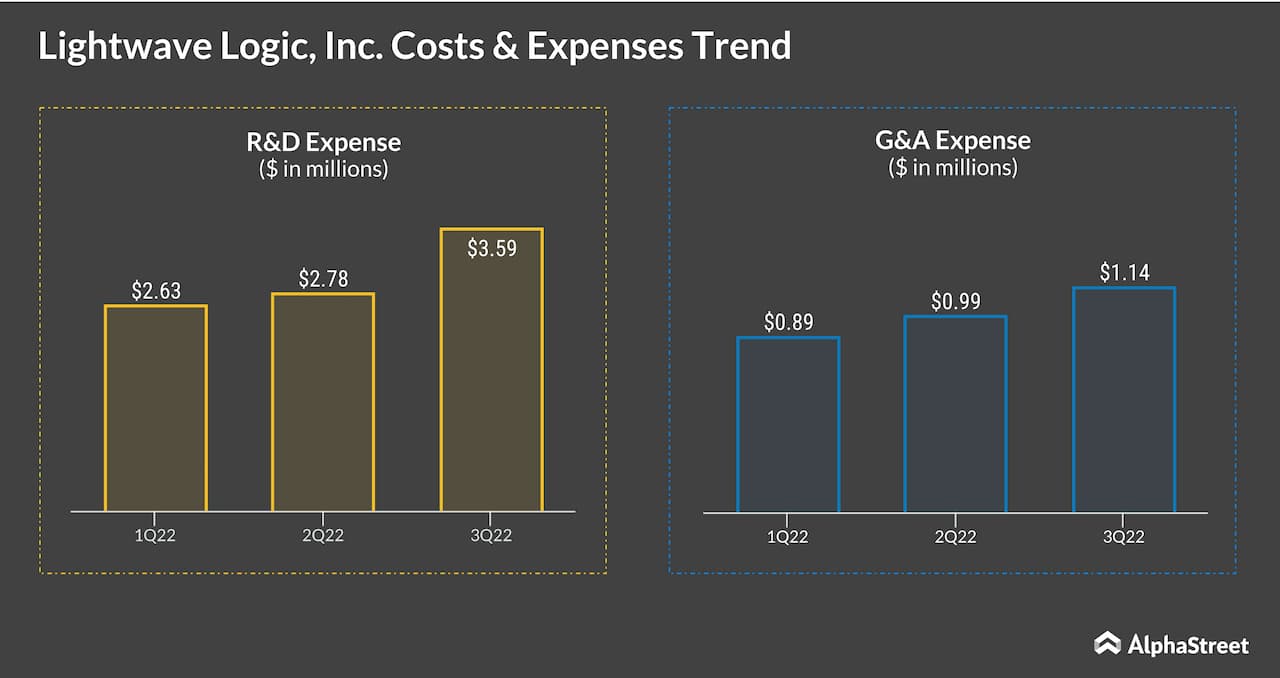Categories Interviews, LATEST, Technology
Lightwave Logic will license technology to make its polymers ubiquitous: CEO Dr. Michael Lebby
Dr. Michael Lebby, chief executive officer of Lightwave Logic, speaks to AlphaStreet about the business and future plans
The widespread digital transformation and steady increase in online content consumption have accentuated the demand for better data transmission solutions. Lightwave Logic, Inc. (Nasdaq: LWLG), a technology company focused on the development of application-specific electro-optic polymers, is on a mission to build advanced systems for transmitting data at higher speeds with less power.
In an email conversation with AlphaStreet, Lightwave Logic’s chief executive officer Dr. Michael Lebby explained the various aspects of the business. Here’s the full interview:
Can you give a brief overview of Lightwave Logic and the product portfolio?

Lightwave Logic is a Colorado-based company designing very high-speed optical devices for the internet. These devices are called optical modulators and they switch light extremely fast, and they do it consuming very low power. We need these types of devices because the internet is a network of fiber optic glass-based cables and the data as we know it travels in digital 1s and 0s using light pulses that are generated by laser diodes. Each laser diode has a sort of shutter in front of it to switch the light: simply put, when light passes then it’s a 1, and when light gets stopped it’s a 0. The faster you do this process, the more data can pass and our optical modulators do this extremely quickly with very low power consumption.
Our company has a unique technology called electro-optic polymers with many patents, and proprietary techniques to protect the technology platform. With this solution, we plan to license our technology so that our polymers can become ubiquitous – similar if you like to organic polymers that are used in organic light-emitting diode (OLED) displays. OLEDs have a different chemistry that sends out red, green, and blue light, while our polymers switch light very quickly, and at very low power consumption.
Please provide insights into your new patents; how do they help the company get an edge over peers?
Our patent portfolio covers not only the chemistry of our organic polymers but how to utilize these polymers in fabrication to create and package these devices and also advanced photonic integration circuit (PIC) designs. Our IP portfolio is continually growing both from internal inventions as well as acquisitions to create high-performance optical engines for pluggable transceivers that are used in routers and servers inside data centers.
What is your strategy for 2023, for increasing profitability and creating shareholder value?
Our strategy for 2023 is to create commercial prototypes for customer testing and evaluation, utilizing commercial foundries and contract manufacturers for packaging. These commercial prototypes will have a wide-ranging reliability data set to prove that our polymer platform is robust and strong. Our strategy folds in well with our goal of having our polymers licensed to become ubiquitous.

How important is the recent acquisition of Chromosol assets, in terms of expanding market share?
Our recent acquisition of Chromosol not only adds important organic polymer patents to our IP portfolio but also brings in technology to assist in the packaging of our optical modulators. The key technology is known as low-temperature atomic layer deposition (ALD). Low-temperature ALD creates a quasi-hermetic packaging solution that is not only cost-effective and high-performance, but it is also what our customers are looking for to move beyond expensive and incumbent gold-box packaging. ALD has been very successful with OLED displays to protect the polymers and works in a similar fashion for our organic polymers.
What are the new trends in optical data transmission, and how Lightwave Logic positions itself to tap into the opportunities?
The new trends in optical data transmission are to move to much higher data rates, lower power consumption, and small footprint or size. Data rates are trending from 800Gbps to 1600bps to 3200Gbps, while power consumption is expected to drop from 100pJ/bit to less than 10pJ/bit. Size is critical to make sure polymer optical engines fit into pluggable transceivers, and our polymer modulators are small enough to achieve these requirements.
The big opportunities are high-volume short-distance pluggable transceiver-based optical interconnects that are utilized in hyper-scale data centers and telecommunications, as well as high-performance computing.
Current initiatives should enable Flux Power to reach profitability: CEO Ron Dutt
_________________________________________________________________________________________________________________
Stocks you may like:
International Business Machines Corp. (IBM) Stock
_________________________________________________________________________________________________________________
Most Popular
PG Earnings: Procter & Gamble Q3 profit climbs, beats estimates
Consumer goods behemoth The Procter & Gamble Company (NYSE: PG) announced financial results for the third quarter of 2024, reporting a double-digit growth in net profit. Sales rose modestly. Core
AXP Earnings: All you need to know about American Express’ Q1 2024 earnings results
American Express Company (NYSE: AXP) reported its first quarter 2024 earnings results today. Consolidated total revenues, net of interest expense, increased 11% year-over-year to $15.8 billion, driven mainly by higher
Netflix (NFLX) Q1 2024 profit tops expectations; adds 9.3Mln subscribers
Streaming giant Netflix, Inc. (NASDAQ: NFLX) Thursday reported a sharp increase in net profit for the first quarter of 2024. Revenues were up 15% year-over-year. Both numbers exceeded Wall Street's